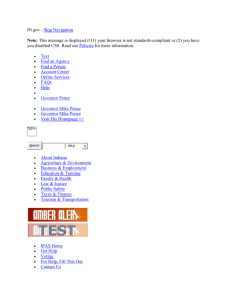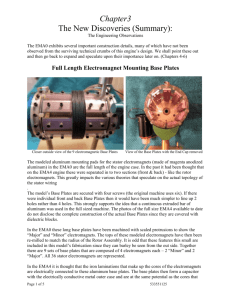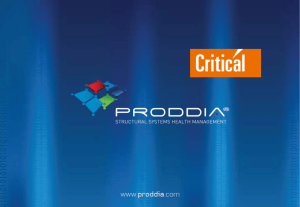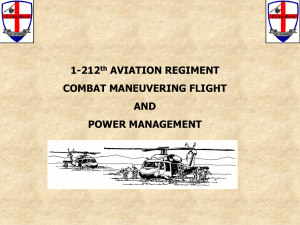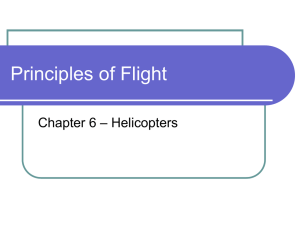High Compression Engine on Light Helicopter Benefits
advertisement
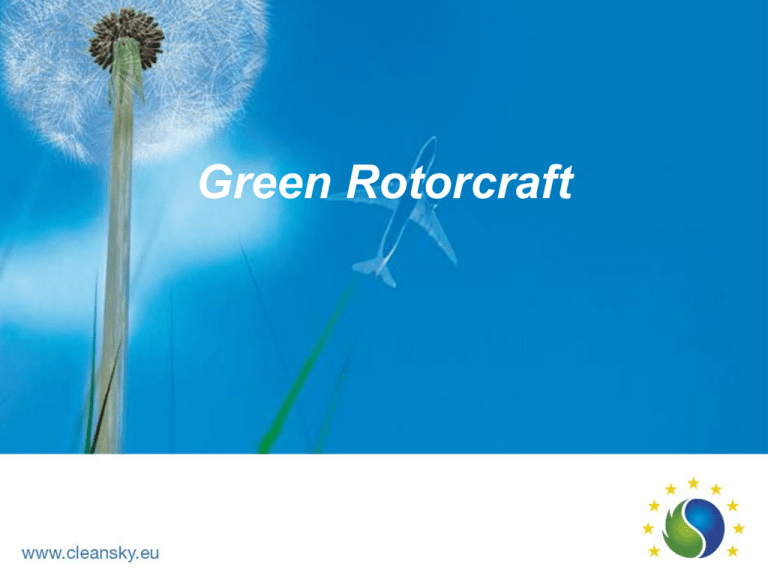
Green Rotorcraft Environmental Objectives Clean Sky / GRC– IPAS 2013 An objective-driven approach implemented through demonstrators Innovative Blades Drag Reduction Eco-friendly Design More Electrical Rotorcraft Optimised Flight Paths High Compression Engine on Light Helicopter Clean Sky / GRC– IPAS 2013 Innovative Rotor Blades - 3D-Optimized Blade Blade design for improved performances (stall alleviation, increased lift and reduced drag) PDR passed, Detailed design of full scale rotor in progress TRL 5/6 to completion (ground test demonstration) - Active Gurney Flap rotor Active device (Gurney Flap) actuated once per revolution and blended into blades: lift increased and reduced power CDR passed Both model scale & full scale tests under preparation Ground tests/ Flight test in 2014 (TRL6) Clean Sky / GRC– IPAS 2013 Drag reduction - Rotor hub & pylon Optimisation of specific helicopter features (rotor hub, aft body, landing skids,) to reduce drag effects Wind Tunnel tests in progress (light& medium twin engine configs) Best solutions to be flight-tested in 2015-16 (TRL6) - Flow separation control devices for drag reduction Study of different active and passive devices Synthetic jets and steady blowing: successful Wind Tunnel Tests (TRL 4) - Engine installation Optimised engine installation (air-inlet, exhaust pipe)for both conventional and Tilt-rotor platforms ERICA tilt-rotor nacelle: Wind Tunnel verification of inlet & bypass efficiency (scheduled in 2014) Clean Sky / GRC– IPAS 2013 Towards a more electrical Aircraft Sample Future System Good results to date - Energy Recovery 1st demo by end 2012 - Electrical Main Rotor Actuators CDR scheduled in July 13 - Starter/ generator PDR passed - Power Converter & Storage Detailed Requirements Clean Sky / GRC– IPAS 2013 High Compression Engine on Light Helicopter - Benefits of this Technology Lower fuel consumption (- 30% Specific Fuel Consumption) Reduction of emissions (-40% CO2, -50% NOx) Increased distances with the same amount of fuel (roughly double is possible in (roughly doubled in certain missions) Reduced Direct Operating Costs by up to 30% (DOC) Improved helicopter performance in hot & high conditions - Technical Data Common rail high pressure injection (1800bar) Turbocharger with air/air intercooler Functions with kerosene Core Engine Mass (dry): 197 kg/ Installed Powerpack: 249 kg Power output (@MGB inlet): 330kW up to 2500m and ISA+20°C - Achievement on track (39 months in total from design to integration) March 2013- first engine test Clean Sky / GRC– IPAS 2013 Early 2014 - first ground tests Environment-Friendly Flight Paths - Flight Procedures Designed with ATM specialists; data base acquired IFR and VFR procedures optimised for take-off and landing phase: GPS-based approach Simultaneous Non Interfering approach (SNI) - Flight Guidance systems Pilot guidance & autopilot designed - Verification of acoustic efficiency Successful flight testing completed in June 13 for IFR-LPV automatic approach Clean Sky / GRC– IPAS 2013 SNI approach (@TLS airport/OPTIMAL project) Towards promising results Innovative Rotor blades: - Active Twist Blade: blade segment tested Active Gurney Flap: rotor tested (whirl tower, flight) 3D-Optimized Blade: rotor tested (whirl tower) High Compression Engine Demo - - Q2/2015 IFR & VFR procedures & systems: validated in operational environment Underpinning & complementing SESAR (rotorcraft) Drag reduction and shape optimisation Q4/2015 Individual devices/mods: WT test (TRL4) or flight (TRL6) Integration with interactions: WT test with complete model (common platform GOAHEAD) Technos for More Electrical Rotorcraft Clean Sky / GRC– IPAS 2013 Q2/2014 Power pack: all bench tests passed Iron Bird & helo ground tests passed; ready for flight testing Environment-Friendly Flight Paths - Q2/2015 - Q3/2015 Q3/2015 Subsystems & Equipment: Individual bench tests Integrated system: Copper Bird testing (TRL5) Electrical Tail Rotor (TRL 5) Electric taxiing (TRL5) Thank you for your attention

